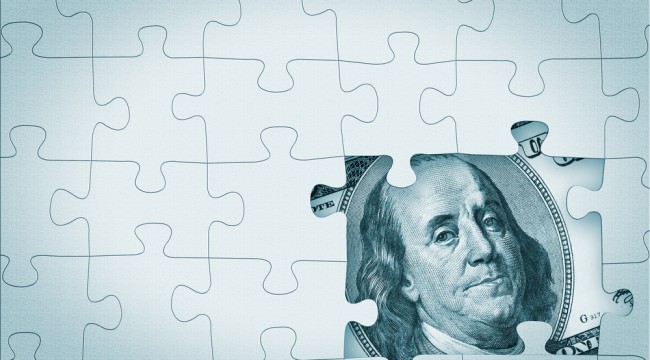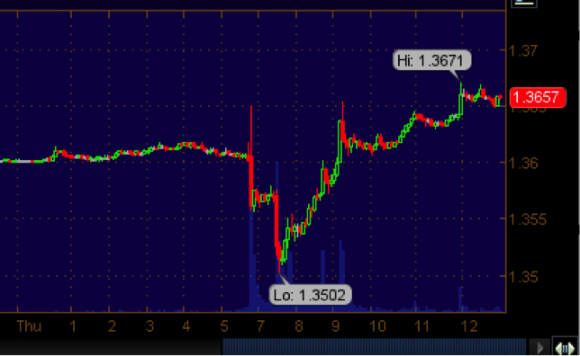Why the Fed's July Meeting Will Be a Showdown for the US Economy
“It is probably time to retire this graph — until the next recession,” quips chartmeister Bill McBride at Calculated Risk.
McBride is the one with the chart tracking the job recovery from every U.S. recession since D-Day. Only this morning, with the release of the Labor Department’s May jobs report, have all the jobs lost since December 2007 been regained.
Of course, the population didn’t stop growing the last 6½ years, so there’s still much ground to be made up.
To the numbers, as conjured by the statisticians….
- 217,000 new jobs last month; that’s four straight months of 200,000 or more, the first time that’s happened since 1999-2000
- The U3 unemployment rate remains 6.3%, lowest since September 2008
- But the percentage of working-age Americans participating in the labor force remains mired near lows last seen in the late 1970s.
John Williams at Shadow Government Statistics still runs the numbers the way they were in the late ’70s. His real-world unemployment rate remains unchanged at 23.2%.
The job numbers, such as they are, just raised the likelihood the Federal Reserve will see its “taper” through to the end.
Recall last December the Fed began dialing back its quantitative easing/money printing. Then, it was $85 billion a month. Now it’s down to $45 billion… and the job numbers make it all but certain they’ll move to $35 billion when they meet later this month.
That makes the following meeting at the end of July decisive. “The showdown comes in July,” wrote the aforementioned Jim Rickards last month.
“If the [economic] data between now and then are uniformly bad, the Fed will pause and then increase money printing in 2015. If the data are mixed, the Fed will finish the taper this year.
“But this does not alter the fact that the fundamental economy is weak and the taper is exacerbating the weakness. If the Fed does not pause in July, they will revert to money printing in 2015 to offset the weakness. Either way, look for QE4 in 2015.”
Stock traders appear to have welcomed the jobs numbers. All the major U.S. indexes are in the green as we write, the Dow cresting 16,900 for the first time and the S&P only two points away from 1,950.
But the small-cap Russell 2000 is the star performer — up nearly 1%, adding to an impressive 2% bump yesterday. “After three months of lower prices, small caps might have just defied the odds and broken free of a nasty little downtrend,” writes Greg Guenthner of our trading desk.
“That’s a much different picture than we’ve seen over the past several months. Since early spring, smaller stocks have noticeably lagged their larger cousins.
“Does yesterday’s action mean it’s time for small stocks to play catch-up? We don’t know yet — but it’s a development we’ll be watching heading into the new trading week.”
Traders in other markets appear nonplussed by the job numbers. Gold is holding onto its gains from yesterday, at $1,253. Crude is likewise nearly flat, at $102.41.
Treasury yields are also little changed, the 10-year note at 2.58%. And currency markets are also quiet the day after the European Central Bank moved to negative interest rates. The dollar index is at 80.45, and the index’s biggest component, the euro, at $1.364.
“It’s a done deal in the eurozone now,” says EverBank’s Chuck Butler, weighing in on the ECB decision.
“And boy, did the markets not like the benchmark rate cut! They sent the euro to the woodshed, and it wasn’t until it was there and had the razor strap taken to its backside (old-timers like me know all too well what that feels like in your grandpa’s woodshed) that it got to come out.
“After the markets had taken their pound of flesh from the euro, it began to come back. And by the time I left the office around lunchtime, the single unit was bruised and battered but not down for the count, and just like in the Rocky movies, it won the battle on the day. That’s right, in the end, the euro was stronger in price than it was before the meeting!”
Indeed, it was. The raw chart action looked positively ridiculous…
The bigger picture? “Now the eurozone has ZIRP [zero interest rate policy], along with the U.S. and Japan!” says Chuck. “The Big Three with ZIRP. It must be catching, eh?”
Regards,
Dave Gonigam
for The Daily Reckoning
Ed. Note: Ah, so much data, so little time. Of course, if you have 5 minutes, Dave Gonigam will break it all down for you, for FREE. Click here to find out more.





Comments: